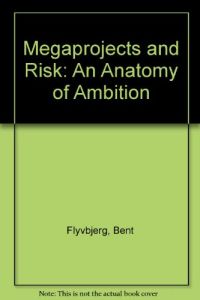Join getAbstract to access the summary!

Join getAbstract to access the summary!
Bent Flyvbjerg, Nils Bruzelius and Werner Rothengatter
Megaprojects and Risk
An Anatomy of Ambition
Cambridge UP, 2003
What's inside?
Want to buy the Brooklyn Bridge? Before spending your tax dollars on a megaproject, learn the real costs, use and risks.
Recommendation
Every once in a while a little book comes along that, while small in size, carries sufficient intellectual weight to strike the body politic between the eyes, thereby getting its collective attention. This may be one such book. It offers a realistic look at megaprojects - those major infrastructure endeavors that span vast bodies of water, dam natural resources to generate energy and extend rail lines to previously unreachable regions - and compares the promises of these projects to what they actually deliver. The report card isn’t very good. Cost overruns are typically 25% to 100%, and sometimes 200% or more. Worse yet, studies show that the public tends to use megaprojects - be they airports or subway systems - only a fraction of the amount predicted. getAbstract.com strongly recommends this book to politicians, legislators and anyone who wants to know the truth behind these huge infrastructure projects, as well as to CEOs, CFOs, project managers and risk officers in the private sector - this applies to your projects, even if there is a difference of scale.
Summary
About the Authors
Bent Flyvbjerg is the author of Making Social Science Matter and Rationality and Power. He is a professor in the department of development and planning at Aalborg University. Nils Bruzelius is an independent consultant who specializes in transport and planning. He is an associate professor at Stockholm University. Werner Rothengatter is the chief of the Institute of Economic Policy Research and of the unit on transport and communication at the University of Karlsruhe, Germany.



















Comment on this summary